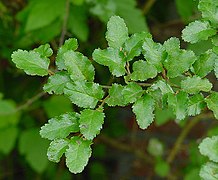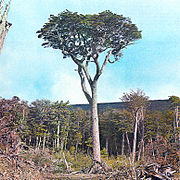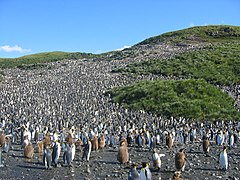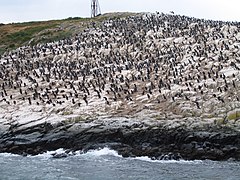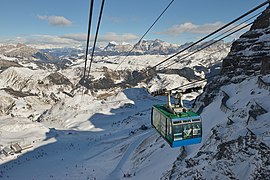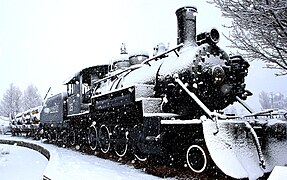Argaea: Difference between revisions
mNo edit summary Tags: Mobile edit Mobile web edit Advanced mobile edit |
Tag: 2017 source edit |
||
| (45 intermediate revisions by the same user not shown) | |||
| Line 1: | Line 1: | ||
{{Infobox settlement | {{Infobox settlement | ||
|name = | |name = Argaea | ||
|native_name = | |native_name = | ||
|native_name_lang = | |native_name_lang = | ||
|settlement_type = [[Government_of_Burgundie#Provincial_and_Colonial_Government|Province]] | |settlement_type = [[Government_of_Burgundie#Provincial_and_Colonial_Government|Province]] | ||
| Line 18: | Line 15: | ||
|shield_alt = | |shield_alt = | ||
|etymology = | |etymology = | ||
|nickname = | |nickname = Southern Sailor, Burgoignesc [[Australis]], the ski capital of [[Burgundie]], the {{wp|après ski}} capital of [[Burgundie]] | ||
|motto = | |motto = | ||
|image_map = | |image_map = | ||
| Line 44: | Line 41: | ||
|seat = Le Havre | |seat = Le Havre | ||
|government_footnotes = | |government_footnotes = | ||
|government_type = | |government_type = | ||
|governing_body = | |governing_body = | ||
|leader_party = | |leader_party = | ||
|leader_title = | |leader_title = {{wp|Governor}}-{{wp|Epistates}} | ||
|leader_name = | |leader_name = | ||
|leader_title1 = | |leader_title1 = | ||
|leader_name1 = | |leader_name1 = | ||
|leader_title2 = | |leader_title2 = | ||
|leader_name2 = | |leader_name2 = | ||
| Line 102: | Line 99: | ||
|area_codes = | |area_codes = | ||
|iso_code = | |iso_code = | ||
|website = | |website = www.burgundie.gouv/argaea | ||
|module = | |module = | ||
|footnotes = | |footnotes = | ||
}} | }} | ||
The ''' | The '''Province of Argaea''', commonly known as '''Argaea''', is an over-seas province of [[Burgundie]], that encompasses the entire Archipelago of Argaea, in the southern interface between the [[Absurian Ocean]] and the [[Ocean of Cathay]], off the continent of [[Australis]].It is part of [[Burgundie]]'s [[Government of Burgundie#Constituent Countries|Burgoignesc Overseas Territory Assembly]]'s [[Geography of Burgundie#Argaea|Polar Burgundies]] geographic designation. It is home to 214,390 Argaeans. It's capital and largest city is Le Havre which also serves as the province's largest port facility. | ||
Argaea is owned almost exclusively by the [[Government of Burgundie|government]] as it was initially settled in the 1880s and later annexed, in [[1927]], as a research outpost for the National Insitutes of Burgundie ([[Burgoignesc language|Burg]]: ''les Institues Nacional de Burgundie (INB)''). The INB, in conjunction with royal and national societies of various scientific studies managed the islands from [[1927]] until [[1973]], when a resort was established just outside of Le Havre, for soldiers, sailors, and marines on rest and relaxation from [[Operation Kipling]]. Even after the war there was interest in vacationing in the marine west coast climate, especially in the winter months when skiing and other snow sports in the winter, June to August. In the 21st century the tourism industry has quadrupled in size as [[Palacin Holdings]] has opened a number of resort hotels, boutique eco-tourism attractions and lodgings, and three new ski mountains between [[2008]] and [[2032]]. | |||
Argaea's primary purpose and main economic driver is still that it is a haven for scientific research, but it's cold climate has made increasingly important to the [[Government of Burgundie|government]] for establishing secure, passively cooled, data centers for government cloud computing storage. As a result, since [[2016]] the [[Cyber Security Defense Agency of Burgundie]] has established a permanent base on Argaea with a staff of 430 staff. The [[National Gendarmerie of Burgundie]] has increased its footprint on the island as well, to protect the physical assets of government. It is also a key base for the [[Vocivine National of Burgundie|Vocivine]] and [[Navy_of_Burgundie|Navy]] because of its remoteness. | |||
==Etymology== | ==Etymology== | ||
== Geography == | Named for Aergaeus, a medieval [[Istroyan]] monk who is credited with the first mention of Argaea in an [[Occidental]] text from his manuscript ''The World and All its Parts Upon Which God's Omnipotent Gaze Is Eternal'' ([[1319]]). | ||
Argaea is a four island | ==Geography== | ||
[[File:Argaea_Topo_Map.png|right|250px|Topographic map of Argaea]] | |||
<gallery mode="packed"> | |||
File:TDFValley.jpg | |||
File:Drimys_winteri.jpg | |||
File:Nothofagus_antarctica_D.jpg | |||
File:Nothofagus_betuloides.jpg | |||
File:Nothofagus_pumilio.jpg | |||
File:IslaLosLobos.jpg | |||
File:Austral_Parakeet.jpg | |||
File:Guanaco_de_San_Carlos.jpg | |||
File:Ringed_Kingfisher_(Megaceryle_torquata)_male_(31705388506).jpg | |||
File:Condor_des_Andes_mâle_adulte.jpg | |||
File:Colony_of_aptenodytes_patagonicus.jpg | |||
File:Picaflor_colibri_rubi.jpg | |||
File:Escalonadas_Lakes.jpg | |||
File:Podiceps_major.jpg | |||
File:Black_Necked_Swan.jpg | |||
File:Magellanic_Woodpecker_Male_(Campephilus_magellanicus).jpg | |||
File:Canal_de_Beagle_-_Illa_pingüins.jpg | |||
File:Beagle_Channel_seen_from_Tierra_del_Fuego_National_Park.jpg | |||
Sella da Ciandepinëi.jpg | |||
</gallery> | |||
Argaea is a four-island {{wp|archipelago}} above the [[Australis]] mainland, in the southern interface between the [[Absurian Ocean]] and the [[Ocean of Cathay]]. | |||
===Climate and environment=== | |||
{{Further|Prevailing Winds}} | |||
[[File:Argaea climate map.png|250px|right|Climate map of Argaea.]] | |||
Argaea Maior, north of the Argaean Mountains, and parts of western Argaea Minor, have a boreal climate. The upper elevations of the Argaean Mountains have a highland climate. South of the Argaean Mountains and on Ile Remarque and Sudile, there is a tundra climate with large glacial formations on the southern slopes of the Argean Mountains. | |||
==History== | ==History== | ||
Due to the remote and desolate nature of the Argaean archipelago, there is no evidence of human habitation prior to the arrival of {{wp|Austronesian peoples}} in the 13th century. | Due to the remote and desolate nature of the Argaean archipelago, there is no evidence of human habitation prior to the arrival of {{wp|Austronesian peoples}} in the 13th century. | ||
===Medieval period=== | ===Medieval period=== | ||
{{Further|Timeline_of_major_world_events#Medieval_history}} | {{Further|Timeline_of_major_world_events#Medieval_history|label1=Medieval history}} | ||
Starting in the 13th century, archeological evidence suggests that minor {{wp|Austronesian peoples|Austronesian}} settlements occurred. These settlements never numbered more than 100 people and it was typical that they would be in existence for only a few years at a time, essentially semi-permanent, seasonal fishing villages. | |||
Starting in the 13th century, archeological evidence suggests that minor {{wp|Austronesian peoples|Austronesian}} settlements | |||
===Early modern history=== | ===Early modern history=== | ||
{{Further|Timeline_of_major_world_events#Early_modern_history}} | {{Further|Timeline_of_major_world_events#Early_modern_history}} | ||
<gallery mode="packed"> | <gallery mode="packed"> | ||
File: | Abraham Storck - Whaling Expedition.jpg | ||
Whaling-dangers of the whale fishery.jpeg | |||
File: Dundee Antarctic Whaling Expedition 1892.jpg | |||
Ward-of-hull fishery.jpg | |||
</gallery> | </gallery> | ||
Argaea was lightly colonized by the [[Duchy of Martilles]] from [[1705]]-[[1875]] as a whaling station and later as a penguin and ice factory. It was never a full-fledged colony and as never self-sufficient, but its revenue was important to the [[Duchy of Martilles|Duchy]] and the ice gave the [[Duchy of Martilles|Metropole]] a taste for refinement. The colony never had permanent population of more than 200 people, mostly men, spread across three whaling stations on Argaea Maior and Argaea Minor. | |||
During the [[First Fratricide]] there was some violence on the island between men from the [[Duchy of Marialianus]], the [[County Palatine of Pumbria|Counties Palatine of Pumbria]] and [[County Palatine of Estia|Estia]] against those from the [[Burgundie-Faramount Union]] and the [[Duchy of Martilles]], with two of the whaling stations being burned to the ground and around 45 men injured and 2 killed. As a result of this violence in [[1849]], all of those who would not swear an oath of fealty to the [[Duchy of Martilles|Duke of Martilles]] were expelled from the colony. This led to a labor shortage as there were no new whalers coming because they had been conscripted to the various armies of the [[Maritime Dericania]]n states. Thereafter, until the end of the [[First Fratricide]] very few new whalers came to the islands, except deserters, from [[Maritime Dericania]]. There was an influx of [[Audonia]]ns who were happy to take the risk for a high wage. This tradition continues today with [[Audonia]]n sailors being prized crewmates on the fishing and whaling ships stationed in Argaea. After the [[First Fratricide]] was over, there was a massive influx of people looking to get away from the political strife in the [[Burgoignesc Metropole]]. In the 1880s there was a demographic shift in Argaea with it being largely families who inhabited the islands as the population grew from 200 to 2,000 from 1880-1910. The passage was still long and arduous and what trees had existed had long been chopped down so families were forced to buy expensive timber and make semi-submerged houses in the summer to maintain better heat retention in the winter. | |||
===Late modern period=== | ===Late modern period=== | ||
{{Further|Timeline_of_major_world_events#Late_modern_history}} | {{Further|Timeline_of_major_world_events#Late_modern_history}} | ||
| Line 143: | Line 165: | ||
File:AmericanAndSovietAtElbe.jpg | File:AmericanAndSovietAtElbe.jpg | ||
</gallery> | </gallery> | ||
The [[First Great War]] had no impact on on Argaea and it wasn't until the [[Second Great War]] and the beginning of the scientific developments that life on Argaea revolved less around fishing and whaling, and more around serving the incoming scientific community. There were no battles in the environs of Argaea but there were a few public panicks about seeing {{wp|ghost ships}} of the coast. A small garrison force and naval contingent were stationed in Argaea, but they never saw action. | |||
===Contemporary period=== | ===Contemporary period=== | ||
{{Further|Timeline_of_major_world_events#Contemporary_history}} | {{Further|Timeline_of_major_world_events#Contemporary_history}} | ||
Fors the remainder of the 1940s and the early 1950s, the government funding for the scientific community began to dry up and people focused less on the service industry and returned to fishing and whaling. However, the advent of the [[Occidental Cold War]] and the designation of Argaea as a prime location for the nation's top-secret projects and continuity of government, the flood of government and government-funded scientists returned to the island and the economic landscape was forever changed. Fishing and whaling became ancillary industries. Many men took jobs in construction both in the private sector or as recruits into the [[Navy of Burgundie|SeaBees). Despite these new jobs they were not highly paid and the men of the island were making less than their wife's who were taking secretarial jobs and going to secretarial school and sometimes also college. During the 50s and 60s married women became the primary breadwinners of the local economy. This shifted again when, during [[Operation Kipling]], the island was used for rest and relaxation for the soldiers fighting in [[Audonia]]. This shift to hospitality meant that younger, unmarried women were the primary breadwinners of the local economy from [[1968]]-[[1984]]. As [[Operation Kipling]] wound down and the rise of word processor became more prevalent, the women who had been in the hospitality industry transitioned into highly skilled secretarial and early data analytical work for the government establishment. With the rise of the personal computer change and the need to be on the cutting edge became paramount and the schools on Argaea, now also full of the children of the scientific community went through a rapid modernization in the 1990s and 2000s and have become some of the highest performing in [[Burgundie]]. In the 21st century the island is still primarily a research hub, but with the increasing ease of access as jet travel becomes ever more efficient, tourism and hospitality is on the rise. The allure of the skiing adventure without having to bring your passport and with very attractive package deals, is increasing the appeal of Argaea to many across [[Burgundie]]. | |||
==Government== | ==Government== | ||
| Line 170: | Line 188: | ||
{{Further|Government_of_Burgundie#Provinces|Government_of_Burgundie#County_Government|Government of Burgundie#Municipal Government|Cities of Burgundie}} | {{Further|Government_of_Burgundie#Provinces|Government_of_Burgundie#County_Government|Government of Burgundie#Municipal Government|Cities of Burgundie}} | ||
===Military | ===Military=== | ||
[[Kiro-Burgoignesc_relations#Joint_Training_Exercise,_Operation_Snowblind]] | |||
[[Navy_of_Burgundie#Absurian_Australis_Command]] | |||
The [[Navy of Burgundie|Australis Dog Sled Patrol]] is an elite unit of the [[Navy of Burgundie]]. It conducts {{wp|long-range reconnaissance patrolling}}, and enforces [[Burgundie|Burgoignesc]] sovereignty in the [[Australis]] wilderness of southern Argaea. Patrolling is usually done in pairs and using dog sleds with about a dozen dogs, sometimes for four months and often without additional human contact. | The [[Navy of Burgundie|Australis Dog Sled Patrol]] is an elite unit of the [[Navy of Burgundie]]. It conducts {{wp|long-range reconnaissance patrolling}}, and enforces [[Burgundie|Burgoignesc]] sovereignty in the [[Australis]] wilderness of southern Argaea. Patrolling is usually done in pairs and using dog sleds with about a dozen dogs, sometimes for four months and often without additional human contact. | ||
{{Infobox military installation | {{Infobox military installation | ||
| name = TBD | | name = TBD | ||
| Line 253: | Line 273: | ||
| other = | | other = | ||
| label1 = [[Bergendii]] | | label1 = [[Occidental]] ([[Bergendii]]/[[Faramount]]esc/[[Dericanian]]) | ||
| value1 = | | value1 =89 | ||
| color1 =#4169E1 | | color1 =#4169E1 | ||
| label2 | | label2 = other/multi-ethnic | ||
| value2 =11 | |||
| color2 =NavajoWhite | |||
| | |||
| | |||
}} | }} | ||
Because most Argaeans are originally from the [[Burgoignesc Metropole]] they are predominantly [[Catholic]], [[Bergendii]], and [[Burgoignesc language]] speakers. They are very highly educated especially due to the scientific focus of the islands and most children are sent to other parts of [[Burgundie]] for their tertiery and quartiary educations. The average level of academic attainment on the islands is at least a master's degree, but this is skewed because of the number of scientists and academics who call the island their home. The people who work in the service industries are typically only the holders of a bachelor's degree. The Argeaen people, due to the influence of the scientific community, are incredibly climate conscious and can be judgemental of others, even other [[Burgundie|Burgoigniacs]] for what they perceive as willful ignorance to the issues of climate change. However, because they are entirely dependent on external sustenance for survival they carefully balance their ire with a need not to bite the hand that feeds them. There is no unique cuisine on Argaea with the exception of the consuption of penguin and fermented shark meat to supplement their standard, globalized diet. The architecture of Aegaea is designed to withstant the elements. There are very few flat buildings, most of them are domed to add structural strength to support heavy snow loads, or they are steeply angled to quickly rid themselves of the snow. | |||
==Economy== | |||
{{Further|Economy of Burgundie}} | |||
===Standard of living and employment=== | |||
Because Argaea's economy is a high-low mix of sectors from research to hospitality, opportunities abound for Argaeans at all skill and education levels, which has helped the islands maintain a fairly steady unemployment rate of around 3.4% for the last decade. | |||
[[Burgundie]]'s high emphasis on [[Culture_in_Burgundie#Education|education]] translates to a particularly educated and skilled workforce, leading to lower unemployment compared to less developed countries. The islands' economic diversity cushions against overreliance on any single industry, which has demonstrably made the island more resilient during downturns. Since [[Burgundie]] strives for [[Total Economic Engagement]] and espouses equal rights and opportunities regardless of gender, race, ethnicity, ability, or background, Argaea benefits from improved access to education and training, impacting employment prospects across various fields. | |||
===Fishing, fisheries, and hunting=== | |||
Fishing and whaling are the only locally sourced foodstuffs on the islands of Argaea. The predominant fish caught in the area are {{wp|Bald Notothen|bald rockcod}}, {{wp|Antarctic cod}}, {{wp|Adamussium colbecki}}, {{wp|Laternula elliptica|Antarctic scallops}}, {{wp|Onykia ingens|greater hooked squid}}, {{wp|colassal squid}}, {{wp|Laternula elliptica|saltwater clams}}, and {{wp|roe}} which make up 80% of the fish caught. Most of the fish is consumed locally, but there are exported contracts with importers in [[Chaukhira]], [[Pursat]], and [[Yanuban]]. Most of this fishing occurs outside of the economic exclusion zone of the islands by the distant-water fishing fleet stationed on the islands, primarily Argaea Minor. These deep-sea trawlers operate in international waters west of Argaea where they can take advantage of the westerlies and the driving currents and are not regulated by any laws or treaties. They work primarily in the [[Absurian Ocean]] and the [[Founders Sea]]. These areas are also used by the whaling fleets stationed on the island. These fleets primarily hunt for {{wp|fin whales}}, {{wp|humpback whales}}, {{wp|sperm whales}}, and {{wp|minke whales}}. The whale blubber, meat, and oil are sold all over the world to willing markets. | |||
===Tourism and hospitality=== | |||
<gallery mode="packed"> | <gallery mode="packed"> | ||
File:Funifor Arabba Porta Vescovo 2.jpg | |||
File:Lift Seceda Gherdëina.jpg | |||
File:Bariloche_-Argentina-.jpeg | |||
File:Pista_Azzurra_Gambarie.jpg | |||
File:Vista_de_Valle_Nevado.jpg | |||
File:Telluride_Ski_Resort,_Col._(8645173834).jpg | |||
File:SnowmobilesYellowstone.jpg | |||
File:Stuben Arlbergpass, Böhringer 2019.jpg | |||
File:Villars-sor-Ollon Primary-School 2020-03-01 13-06.jpg | |||
File:2020-08-24 MS FRAM - IMO 9370018, at Brown Station, Antarctica 2019-03-10.jpg | |||
</gallery> | |||
The tourism industry has quadrupled in size as [[Palacin Holdings]], [[Palacin_Holdings#Elite_Accomodations_Group|Elite Accomodations Group]] has opened a number of resort hotels, boutique eco-tourism attractions and lodgings, and three new ski mountains between [[2008]] and [[2032]]. There are four cruise lines that operate service to Argaea, and there are two {{wp|ports of call}} for these crusie ships, Le Havre and Lille on the eastern and western sides of Argaea Maior respectively. Recent estimates are that 800,000 to 1 million people visit Araea each year, primarily during the southern hemispheric winter (June - August) to avoid the heat of the tropics. The primary draw is winter sports with alpine skiing and snowboarding being the most popular but tundra expeditions, mountain climbing, snowmobiling, whale and seal watching are also popular. Argaea is also picking up an interest in hovercraft like those used in [[Nauta Normand]] and this is translating to a business oppurtunity to do both charter hovercraft trips, and hovercraft rentals. There is also a massive {{wp|Ski_resort#Facilities_and_amenities|Après-ski}} industry involving bars, restaurants, spas, nightlife, and | |||
===Science and research=== | |||
<gallery mode="packed"> | |||
Resupplying from USCGC North Star months after the Antarctic Snow Cruiser arrived.jpg | |||
The Antarctic Snow Cruiser driving off of USCGC North Star.jpg | |||
Polarstern-cruise ANT-I 2 t hg.jpg | |||
Polarstern-cruise ANT-I 2 u hg.jpg | |||
Antarctica Oden the Ice Breaker.jpg | |||
David Huebner, United States Ambassador to New Zealand and Samoa visit to Antarctica on December 2, 2010 (Day 4) - 23.jpg | |||
David Huebner, United States Ambassador to New Zealand and Samoa visit to Antarctica on November 30, 2010 (Day 2) - 20.jpg | |||
David Huebner, United States Ambassador to New Zealand and Samoa visit to Antarctica on December 2, 2010 (Day 4) - 8.jpg | |||
David Huebner, United States Ambassador to New Zealand and Samoa visit to Antarctica on November 30, 2010 (Day 2) - 14.jpg | |||
David Huebner, United States Ambassador to New Zealand and Samoa visit to Antarctica on November 30, 2010 (Day 2) - 46.jpg | |||
David Huebner, United States Ambassador to New Zealand and Samoa visit to Antarctica on November 30, 2010 (Day 2) - 4.jpg | |||
David Huebner, United States Ambassador to New Zealand and Samoa visit to Antarctica on November 30, 2010 (Day 2) - 42.jpg | |||
David Huebner, United States Ambassador to New Zealand and Samoa visit to Antarctica on December 2, 2010 (Day 4) - 1.jpg | |||
Antarctica 2013 Journey to the Crystal Desert (8369515691).jpg | |||
Antarctica (11235794264).jpg | |||
</gallery> | </gallery> | ||
Argaea is the pre-eminent [[Burgundie|Burgoignesc]] scientific research area with over 75 laboratory and data analysis facilities, 97 research stations, and 4,390 weather monitoring stations. These are administered by the Burgoignesc Australis Program ([[Burgoignesc language|Burg:]] ''Programme Australis Burgoignesc (PAB)'', Division of Polar Programs ([[Burgoignesc language|Burg:]] ''Division des Programmes Polaire (DPP)'') within the Royal Burgoignesc Society of Sciences ([[Burgoignesc language|Burg:]] ''Societie Real Burgoignesc des Science (SRBS)''). | |||
The original permanent station was built by [[Navy of Burgundie|Seabees]] during November [[1936]], as a part of [[Burgundie]]'s commitment to the scientific goals of creating a better maritime navigational system, which would ultimately lead to the creation of {{wp|LORAN}} and the {{wp|Automatic identification system}}. Through the [[Second Great War]], the number of scientists, mathematicians, physicists, astronomers, and secretarial staff to do data collection and analysis exploded and by the wars end there were 43,400 people living on the remote islands. They almost all left after the war, with only the original botanists, marine biologists, and climatologists remaining. Many of the buildings were abandoned and succumbed to the environment. In the 50s, with the advent of the [[Occidental Cold War]], Argaea became an ideal location to do secret research away from the prying eyes of [[Caphiria]] and its spy network. A number of top-secret projects were moved to Argaea and a network of bunkers were created as part of the {{wp|continuity of government}} | |||
The number of scientific researchers and members of the support staff housed at the Australis Station has always varied seasonally, with a peak population of about 200 in the summer operational season from October to February. In recent years, the winter-time population has been around 50 people. | |||
=== | ==== Scientific Experiments ==== | ||
Starting immediately after the construction of the station in [[1936]], the teams of scientists started working on more accurate star charts and other astronomical recordings to use as a redundant navigation system. They also tested extreme cold weather conditions on food and equipment for the [[Burgoignesc Security Forces]]. | |||
[[ | |||
In [[1942]], the station became the hub for the secret {{wp|LORAN}} program (the precursor to satellite navigation systems like {{wp|GPS}}) that the [[Navy of Burgundie]] was very interested in developing. Known as ''Project SeaHawk'', the development of {{wp|LORAN}} became a priority for the [[Burgoignesc Security Forces]] at the waning days of the [[Second Great War]], knowing the funding for such projects would be reduced dramatically at the war's end. The radio navigation system was completed in [[1943]] in the final days of the war and never saw combat operations, but it was employed ships and long range patrol aircraft of the [[Navy of Burgundie]] and used extensively. It was particularly useful for [[List of aviso classes of the Navy of Burgundie|avisos]] whose role was undergoing a shift in the middle of the 20th century, being used as floating radio relays and therefore spending months adrift in the middle of the ocean. {{wp|LORAN}} and after [[1957]] {{wp|Loran-C}}, made these the positioning of the avisos and their radio relays increasingly accurate. | |||
In September [[1964]], the scientists at Australis started ice coring, a practice they have continued approximately once a decade since then ([[1974]], [[1985]], [[1995]], [[2007]], [[2017]], and [[2027]]). The ice core samples have been used to examine historic snowfalls, ice melts, atmospheric carbon dioxide levels, radiation levels, average ambient temperatures, and have been used in the climate mapping project in conjunction with other stations and nations around the world. | |||
In [[2016]], Argaea released its first finished project in the form of an international time database. The project helped synchronize time across all the nations in a standardized format and help synchronize all calendars that use the Argaean format. The calendar format was announced to [[Burgundie]] as the first finished project, and is now accepted by many nations as an acceptable standardized time format. | |||
As of [[2021]], Argaea is working on a central database to store vital trade and economic information from all countries in a unified format. The project is still ongoing as of [[2035]] but is expected to be finished within the next decade. | |||
The official [[Science_and_Technology_in_Burgundie#Mapping|maps]] of [[Burgundie]] are maintained by the [[Royal Burgoignesc Geological Survey]] and the [[Oceanographic, Atmospheric, and Cartographic Administration of Burgundie]]. Support for these maps is also provided by various branches of the [[Burgoignesc Security Forces]], particularly the [[Revenue Guard]] and Defense Intelligence. All map originals are co-located in the Royal Archives and the Citizen's Court Library, and their electronic versions are kept both locally on 4 servers throughout [[Burgundie]] as well as on the natioanl backup servers in Argaea. | |||
=== | ===== Argaean Seed Bank ===== | ||
The '''Argaea Global Seed Vault''' is a secure seed bank on Argaea. The [[League of Nations|World Food Programme]] started the vault to preserve a wide variety of plant seeds that are duplicate samples, or "spare" copies, of seeds held in other gene banks worldwide. The seed vault is an attempt to ensure against the loss of seeds in other genebanks during large-scale regional or global crises. The seed vault is managed under terms spelled out in a bi-lateral agreement between the [[Government of Burgundie]] and [[League of Nations]]. | |||
The [[Government of Burgundie]] entirely funded the vault's approximately $8.8 million construction. Storing seeds in the vault is free to end users, with [[Burgundie]] paying for the majority of the banks operational costs. | |||
===Sports and leisure=== | ===Sports and leisure=== | ||
There is a hockey team on Argaea, the Emperors, named for the penguins, based in Le Havre. Argea is also the home of the Burgoignesc Istoyan Winter Games Teams. The various skiing, bobsledding, luge, and hockey teams all are based in Argaea which is a huge draw for tourism. Their facilities are a major economic driver in the villages that they are situated in. | |||
===Trade=== | ===Trade=== | ||
{{Infobox port | {{Infobox port | ||
| name = Port | | name = Port Le Havre | ||
| image = | | image = File:Burg_port_06.jpg | ||
| image_size = 200px | | image_size = 200px | ||
| image_caption = | | image_caption = | ||
| Line 330: | Line 359: | ||
| coordinates = | | coordinates = | ||
<!-- Details --> | <!-- Details --> | ||
| opened = [[ | | opened = [[1925]] | ||
| operated = | | operated = | ||
| owner = | | owner = | ||
| Line 340: | Line 369: | ||
| wharfs = | | wharfs = | ||
| piers = | | piers = | ||
| employees = | | employees = 150 | ||
| leadershiptitle = | | leadershiptitle = | ||
| leader = | | leader = | ||
| Line 350: | Line 379: | ||
| blankdetails3 = | | blankdetails3 = | ||
<!-- Statistics --> | <!-- Statistics --> | ||
| arrivals = | | arrivals = 79 | ||
| cargotonnage = | | cargotonnage = 405.219 tonnes | ||
| containervolume = | | containervolume = | ||
| cargovalue = | | cargovalue = | ||
| passengertraffic = | | passengertraffic = | ||
| revenue = | | revenue = ₮9 million | ||
| profit = | | profit = | ||
| blankstatstitle1 = | | blankstatstitle1 = | ||
| Line 365: | Line 394: | ||
| website = | | website = | ||
}} | }} | ||
Argaea imports almost all of its commodities and its entirely dependent on external support from the [[Burgoignesc Metropole]]. The Port of Le Havre is a large port with a container terminal, a bulk cargo terminal, and a cruise terminal. There also three smaller feeder ports across the island that allow the disparate settlements to get supplies. Because of the national level of most of the agencies on the islands the [[Government of Burgundie]] typically pays for the charter costs of the ships to defray the costs of consumer goods. | |||
===Infrastructure=== | ===Infrastructure=== | ||
====Maritime==== | ====Maritime==== | ||
=====Lighthouses===== | [[File:Burg pics 01.png|left|thumb|Ships coming into Argaea in July.]] | ||
Due to the remoteness of the islands, there are no commuter passenger ferries. However, there are two {{wp|ports of call}} for cruise ships, Le Havre and Lille, on the eastern and western sides of Argaea Maior, respectively. These {{wp|ports of call}} are designed only for tourist use and all commuter travel is done by plane. | |||
=====Lighthouses and beacons===== | |||
{{Further|Burgoignesc Maritime Navigation Administration}} | {{Further|Burgoignesc Maritime Navigation Administration}} | ||
<gallery mode="packed"> | <gallery mode="packed"> | ||
Michigan City Lighthouse - panoramio (1).jpg | |||
Cleveland Harbor West Pierhead Lighthouse C DVIDS1099431.jpg | |||
South Pier Lighthouse at South Haven, MI.jpg | |||
Thawing the Lighthouse (455207540).jpg | |||
Harmaja Lighthouse - Harmajan majakka 2011 C IMG 3785.jpg | |||
</gallery> | |||
There is also a [[Global Maritime Distress and Safety System]] repeater and beacon on the island. | |||
====Rail==== | ====Rail==== | ||
{{Further|Rail transportation in Burgundie}} | {{Further|Rail transportation in Burgundie}} | ||
<gallery mode="packed"> | |||
SJN Di 4 Finneidfjord - Mo i Rana.jpg | |||
Two Spot Logging Train covered in snow - March 2015.jpg | |||
BNSF Railway train passing through the snow in Flagstaff, AZ - March 2015.jpg | |||
Train snow plow in Glenwood Springs, Colorado - LCCN2015633617.tiff | |||
</gallery> | |||
Argaea uses [[Track gauges around the world|Standard gauge]], 1,435 mm (4 ft 8+1⁄2 in) for both freight and passenger rail. | |||
There is no passenger rail in Argaea, there are about 1,384 km of rails used for freight for the research and industrial complexes. Due to the climate all power is provided by the locomotives, there is no electrification of the rails. 543km of the rails are {{wp|double track}}, there are no lengths of high-speed rail in Argaea. | There is no passenger rail in Argaea, there are about 1,384 km of rails used for freight for the research and industrial complexes. Due to the climate, all power is provided by the locomotives, there is no electrification of the rails. 543km of the rails are {{wp|double track}}, there are no lengths of high-speed rail in Argaea. | ||
====Roads==== | ====Roads==== | ||
[[File:Argaea snow bus.jpg|thumb|right|ATA winterized buses.]] | |||
Car ownership is common in Argaea but family units typically only have one car. Transit options exist for school and work so cars are used primarily for chores and housekeeping and visiting friends and family. Because of the cost of gasoline, personal vehicles are rarely people's first choice for transit. Argaea has 11,647 km (7237.11 mi) of roads, and 8,480 km are improved. Most of the improved roads are long-haul routes connecting the sparse settlements. Almost all roads are owned and maintained by the provincial transit authority The Transportation Authority of Argaea ([[Burgoignesc clanguage|Burg]]:''Authoritat de Transportacion de Argaea (ATA)''), with the exception of the roads within Le Havre which has its own transportation authority who maintain the roads within the city limits of Le Havre. There is an inter-community bus system, also operated by the ATA that, in the summer, connects the disparate communities to Le Havre. In the winter, road buses are replaced by off-road buses and the frequency is cut dramatically. | |||
====Air==== | ====Air==== | ||
{{Further|International airports}} | {{Further|International airports}} | ||
The [[Argaea International Airport and Air Base]], outside of Le Havre, is a small, long haul airport facility that is shared by the civilian terminal and the Australis Task Section of the [[Royal Air Service of Burgundie]], [[Revenue Guard]], and [[Navy of Burgundie|Navy of Burgundie Hyperthalatton]]. | |||
{| class="wikitable sortable" | {| class="wikitable sortable" | ||
| Line 398: | Line 441: | ||
!Picture | !Picture | ||
|- | |- | ||
| | |[[Argaea International Airport and Air Base]] | ||
| | |Le Havre, Argaea, {{flag|Burgundie}} | ||
| | |Passenger, cargo, and {{wp|air base}} | ||
| | ||24/7/365 air traffic control operations, 2x runways, capable of receiving up to middle sized airframes, cargo terminal, passenger terminal, minimal maintenance facilities, integrated customs and border control service | ||
| | |[[Air Traffic Regulatory Organization|ATRO]]: GAB | ||
{{wp|International Civil Aviation Organization airport code|ICAO}}: BGRB | |||
| | | | ||
|- | |- | ||
| Line 408: | Line 452: | ||
====Energy and electricity==== | ====Energy and electricity==== | ||
{{Further| | {{Further|21st_Century_Burgoignesc_Power_Projection_Stratagem#BORA_Waste_to_Energy_CompactEnergy policy in Burgundie|Science and Technology in Burgundie#Energy|Energy policy in Burgundie}} | ||
<gallery mode="packed"> | <gallery mode="packed"> | ||
</gallery> | </gallery> | ||
Argaea is powered by two nuclear reactors that provide all of the civilian power to the islands and most of the power to the government facilities. As a fail-safe there are 6 ciritical facilities that have "less volatile" power generation stations which burn fossil fuels. In [[1998]]-[[2012]] a massive tidal generation project was created in the Viseaux channel that takes advantage of the incredibly powerful westerly current that makes the channel a navigational hazard. The project now generates 17MW and further expansion is expected before 2050. | |||
The [[21st_Century_Burgoignesc_Power_Projection_Stratagem#BORA_Waste_to_Energy_Compact|BORA Waste to Energy Compact]] went into effect in [[2027]] with construction of a Waste to Energy power plant starting in [[2028]]. Two plants were built in Argaea generates approximately 208,000 kWh/day with a waste reduction capacity of 220,000 kg/day. | |||
====Phone service and internet==== | ====Phone service and internet==== | ||
Phone service is provided by Island Mobile, and Landline service is available and is still popular with those who live in the remote parts of Argaea. Because of the number and intensity of the broadcasting and receiving equipment used by the government, cellular service can be spotty at times when the government is using all of its apparatuses. | |||
Highspeed internet service is provided by National Wireless Services a public-private ISP offered to areas of the [[Burgoignesc thalattocracy]] that don't have enough demand to create a competitive market. Residential internet speeds average 2 gigabits while commercial speeds are typically higher in the 3-4 gigabit range. National Wireless Services piggybacks on the Island Mobile towers and also has a few towers of their own. | |||
There are also two [[Global Maritime Distress and Safety System]] repeaters and a beacon on the islands. | |||
==See also== | ==See also== | ||
{{Colonies of Burgundie}} | |||
{{Burgundie NavBox}} | {{Burgundie NavBox}} | ||
[[Category: Burgundie]] | [[Category: Burgundie]] | ||
| Line 435: | Line 476: | ||
[[Category:Islands]] | [[Category:Islands]] | ||
[[Category: Burgoignesc islands]] | [[Category: Burgoignesc islands]] | ||
[[Category:Map Completion Project]] | [[Category:Map Completion Project (Completed)]] | ||
Latest revision as of 13:29, 4 November 2024
Script error: The module returned a nil value. It is supposed to return an export table.
Argaea | |
|---|---|
| Nickname(s): | |
| Nation | |
| Constituent Country equivalent | Burgoignesc Overseas Representative Assembly |
| Geographic Designation | Polar Burgundie |
| Capital | Le Havre |
| Area | |
| • Total | 604,762.224 km2 (233,500.000 sq mi) |
| Population (2030) | |
| • Total | 214,390 |
| • Density | 0.35/km2 (0.92/sq mi) |
| Demonym | Argaeans |
| Website | www.burgundie.gouv/argaea |
The Province of Argaea, commonly known as Argaea, is an over-seas province of Burgundie, that encompasses the entire Archipelago of Argaea, in the southern interface between the Absurian Ocean and the Ocean of Cathay, off the continent of Australis.It is part of Burgundie's Burgoignesc Overseas Territory Assembly's Polar Burgundies geographic designation. It is home to 214,390 Argaeans. It's capital and largest city is Le Havre which also serves as the province's largest port facility.
Argaea is owned almost exclusively by the government as it was initially settled in the 1880s and later annexed, in 1927, as a research outpost for the National Insitutes of Burgundie (Burg: les Institues Nacional de Burgundie (INB)). The INB, in conjunction with royal and national societies of various scientific studies managed the islands from 1927 until 1973, when a resort was established just outside of Le Havre, for soldiers, sailors, and marines on rest and relaxation from Operation Kipling. Even after the war there was interest in vacationing in the marine west coast climate, especially in the winter months when skiing and other snow sports in the winter, June to August. In the 21st century the tourism industry has quadrupled in size as Palacin Holdings has opened a number of resort hotels, boutique eco-tourism attractions and lodgings, and three new ski mountains between 2008 and 2032.
Argaea's primary purpose and main economic driver is still that it is a haven for scientific research, but it's cold climate has made increasingly important to the government for establishing secure, passively cooled, data centers for government cloud computing storage. As a result, since 2016 the Cyber Security Defense Agency of Burgundie has established a permanent base on Argaea with a staff of 430 staff. The National Gendarmerie of Burgundie has increased its footprint on the island as well, to protect the physical assets of government. It is also a key base for the Vocivine and Navy because of its remoteness.
Etymology
Named for Aergaeus, a medieval Istroyan monk who is credited with the first mention of Argaea in an Occidental text from his manuscript The World and All its Parts Upon Which God's Omnipotent Gaze Is Eternal (1319).
Geography
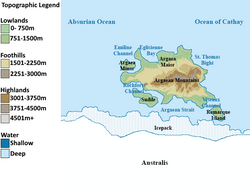
Argaea is a four-island archipelago above the Australis mainland, in the southern interface between the Absurian Ocean and the Ocean of Cathay.
Climate and environment
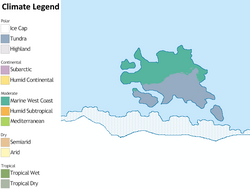
Argaea Maior, north of the Argaean Mountains, and parts of western Argaea Minor, have a boreal climate. The upper elevations of the Argaean Mountains have a highland climate. South of the Argaean Mountains and on Ile Remarque and Sudile, there is a tundra climate with large glacial formations on the southern slopes of the Argean Mountains.
History
Due to the remote and desolate nature of the Argaean archipelago, there is no evidence of human habitation prior to the arrival of Austronesian peoples in the 13th century.
Medieval period
Starting in the 13th century, archeological evidence suggests that minor Austronesian settlements occurred. These settlements never numbered more than 100 people and it was typical that they would be in existence for only a few years at a time, essentially semi-permanent, seasonal fishing villages.
Early modern history
Argaea was lightly colonized by the Duchy of Martilles from 1705-1875 as a whaling station and later as a penguin and ice factory. It was never a full-fledged colony and as never self-sufficient, but its revenue was important to the Duchy and the ice gave the Metropole a taste for refinement. The colony never had permanent population of more than 200 people, mostly men, spread across three whaling stations on Argaea Maior and Argaea Minor. During the First Fratricide there was some violence on the island between men from the Duchy of Marialianus, the Counties Palatine of Pumbria and Estia against those from the Burgundie-Faramount Union and the Duchy of Martilles, with two of the whaling stations being burned to the ground and around 45 men injured and 2 killed. As a result of this violence in 1849, all of those who would not swear an oath of fealty to the Duke of Martilles were expelled from the colony. This led to a labor shortage as there were no new whalers coming because they had been conscripted to the various armies of the Maritime Dericanian states. Thereafter, until the end of the First Fratricide very few new whalers came to the islands, except deserters, from Maritime Dericania. There was an influx of Audonians who were happy to take the risk for a high wage. This tradition continues today with Audonian sailors being prized crewmates on the fishing and whaling ships stationed in Argaea. After the First Fratricide was over, there was a massive influx of people looking to get away from the political strife in the Burgoignesc Metropole. In the 1880s there was a demographic shift in Argaea with it being largely families who inhabited the islands as the population grew from 200 to 2,000 from 1880-1910. The passage was still long and arduous and what trees had existed had long been chopped down so families were forced to buy expensive timber and make semi-submerged houses in the summer to maintain better heat retention in the winter.
Late modern period
The First Great War had no impact on on Argaea and it wasn't until the Second Great War and the beginning of the scientific developments that life on Argaea revolved less around fishing and whaling, and more around serving the incoming scientific community. There were no battles in the environs of Argaea but there were a few public panicks about seeing ghost ships of the coast. A small garrison force and naval contingent were stationed in Argaea, but they never saw action.
Contemporary period
Fors the remainder of the 1940s and the early 1950s, the government funding for the scientific community began to dry up and people focused less on the service industry and returned to fishing and whaling. However, the advent of the Occidental Cold War and the designation of Argaea as a prime location for the nation's top-secret projects and continuity of government, the flood of government and government-funded scientists returned to the island and the economic landscape was forever changed. Fishing and whaling became ancillary industries. Many men took jobs in construction both in the private sector or as recruits into the [[Navy of Burgundie|SeaBees). Despite these new jobs they were not highly paid and the men of the island were making less than their wife's who were taking secretarial jobs and going to secretarial school and sometimes also college. During the 50s and 60s married women became the primary breadwinners of the local economy. This shifted again when, during Operation Kipling, the island was used for rest and relaxation for the soldiers fighting in Audonia. This shift to hospitality meant that younger, unmarried women were the primary breadwinners of the local economy from 1968-1984. As Operation Kipling wound down and the rise of word processor became more prevalent, the women who had been in the hospitality industry transitioned into highly skilled secretarial and early data analytical work for the government establishment. With the rise of the personal computer change and the need to be on the cutting edge became paramount and the schools on Argaea, now also full of the children of the scientific community went through a rapid modernization in the 1990s and 2000s and have become some of the highest performing in Burgundie. In the 21st century the island is still primarily a research hub, but with the increasing ease of access as jet travel becomes ever more efficient, tourism and hospitality is on the rise. The allure of the skiing adventure without having to bring your passport and with very attractive package deals, is increasing the appeal of Argaea to many across Burgundie.
Government
| This article is part of a series on the |
| BORA |
|---|
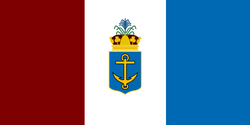 |
| Statistics |
|
| Key topics |
| Provinces |
|
Burgundie portal |
Argaea is part of the Burgoignesc Overseas Territory Assembly's Polar Burgundies geographic designation. Burgoignesc Overseas Territory Assembly is a constituent country equivalent of Burgundie with its own assembly, prime minister, budget, and laws. Burgundie's national governmental influence is limited to subsidies, education, and security, however, its financial and cultural institutes cast a long shadow across Argaea.
Argaea is a province within Burgoignesc Overseas Territory Assembly with its own semi-elected Governor-Epistates, representative legislative body, and court system.
Argaeans are Burgoigniacs/Burgoignix with complete civil and economic rights, and citizenship (political rights) under the same federal service criteria as all residents of Burgundie. Burgoignesc is the official language.
Provincial executive
The provincial executive is the Governor-Epistates. Three candidates are elected by a single transferable vote election held every 5 years, the three candidates are presented to the Court of St. Alphador and the next Governor-Epistates is chosen from these candidates. If the citizenry rejects the selection, a run-off election is held with the remaining two candidates.
Provincial legislature
Like the Citizens Court of the National Assembly (Burg. La Assemblee de Ciutadans de l'Assemblee Nacional, ACAN), The Argaean Citizen's Court of the Provincial Assembly is a unicameral legislator. It makes provincial law, has the power of the provincial purse, and has the power of impeachment, by which it can remove sitting members of the provincial government. The Assembly has three seats for each province, one for the Burgoignesc Overseas Territory Assembly's Argaea liaison, 3 for the clergy, 3 seats reserved for municipal leaders, and 3 for a rota of private business leaders. On 6 occasions throughout the year 3 more seats are opened to the public to debate topics that are not on the annual legislative agenda.
Administrative divisions and local governance
Military
Kiro-Burgoignesc_relations#Joint_Training_Exercise,_Operation_Snowblind Navy_of_Burgundie#Absurian_Australis_Command The Australis Dog Sled Patrol is an elite unit of the Navy of Burgundie. It conducts long-range reconnaissance patrolling, and enforces Burgoignesc sovereignty in the Australis wilderness of southern Argaea. Patrolling is usually done in pairs and using dog sleds with about a dozen dogs, sometimes for four months and often without additional human contact.
| TBD | |
|---|---|
| | |
| Site information | |
| Owner | Burgoignesc Security Forces |
| Operator | Navy of Burgundie |
| Controlled by | TBD |
| Condition | Operational |
| Site history | |
| Built | TBD |
| Garrison information | |
| Occupants | Navy
|
Emergency response
National Gendarmerie of Burgundie, Overseas Gendarmerie, Australis Command
Revenue Guard, Absurian Station
Society
| This article is part of a series on the |
| Culture in Burgundie |
|---|
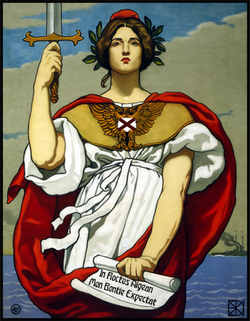 |
| Society |
| Arts and literature |
| Other |
|
Burgundie portal |
Self-reported ethnic origin in Placename (2035)
Because most Argaeans are originally from the Burgoignesc Metropole they are predominantly Catholic, Bergendii, and Burgoignesc language speakers. They are very highly educated especially due to the scientific focus of the islands and most children are sent to other parts of Burgundie for their tertiery and quartiary educations. The average level of academic attainment on the islands is at least a master's degree, but this is skewed because of the number of scientists and academics who call the island their home. The people who work in the service industries are typically only the holders of a bachelor's degree. The Argeaen people, due to the influence of the scientific community, are incredibly climate conscious and can be judgemental of others, even other Burgoigniacs for what they perceive as willful ignorance to the issues of climate change. However, because they are entirely dependent on external sustenance for survival they carefully balance their ire with a need not to bite the hand that feeds them. There is no unique cuisine on Argaea with the exception of the consuption of penguin and fermented shark meat to supplement their standard, globalized diet. The architecture of Aegaea is designed to withstant the elements. There are very few flat buildings, most of them are domed to add structural strength to support heavy snow loads, or they are steeply angled to quickly rid themselves of the snow.
Economy
Standard of living and employment
Because Argaea's economy is a high-low mix of sectors from research to hospitality, opportunities abound for Argaeans at all skill and education levels, which has helped the islands maintain a fairly steady unemployment rate of around 3.4% for the last decade. Burgundie's high emphasis on education translates to a particularly educated and skilled workforce, leading to lower unemployment compared to less developed countries. The islands' economic diversity cushions against overreliance on any single industry, which has demonstrably made the island more resilient during downturns. Since Burgundie strives for Total Economic Engagement and espouses equal rights and opportunities regardless of gender, race, ethnicity, ability, or background, Argaea benefits from improved access to education and training, impacting employment prospects across various fields.
Fishing, fisheries, and hunting
Fishing and whaling are the only locally sourced foodstuffs on the islands of Argaea. The predominant fish caught in the area are bald rockcod, Antarctic cod, Adamussium colbecki, Antarctic scallops, greater hooked squid, colassal squid, saltwater clams, and roe which make up 80% of the fish caught. Most of the fish is consumed locally, but there are exported contracts with importers in Chaukhira, Pursat, and Yanuban. Most of this fishing occurs outside of the economic exclusion zone of the islands by the distant-water fishing fleet stationed on the islands, primarily Argaea Minor. These deep-sea trawlers operate in international waters west of Argaea where they can take advantage of the westerlies and the driving currents and are not regulated by any laws or treaties. They work primarily in the Absurian Ocean and the Founders Sea. These areas are also used by the whaling fleets stationed on the island. These fleets primarily hunt for fin whales, humpback whales, sperm whales, and minke whales. The whale blubber, meat, and oil are sold all over the world to willing markets.
Tourism and hospitality
The tourism industry has quadrupled in size as Palacin Holdings, Elite Accomodations Group has opened a number of resort hotels, boutique eco-tourism attractions and lodgings, and three new ski mountains between 2008 and 2032. There are four cruise lines that operate service to Argaea, and there are two ports of call for these crusie ships, Le Havre and Lille on the eastern and western sides of Argaea Maior respectively. Recent estimates are that 800,000 to 1 million people visit Araea each year, primarily during the southern hemispheric winter (June - August) to avoid the heat of the tropics. The primary draw is winter sports with alpine skiing and snowboarding being the most popular but tundra expeditions, mountain climbing, snowmobiling, whale and seal watching are also popular. Argaea is also picking up an interest in hovercraft like those used in Nauta Normand and this is translating to a business oppurtunity to do both charter hovercraft trips, and hovercraft rentals. There is also a massive Après-ski industry involving bars, restaurants, spas, nightlife, and
Science and research
Argaea is the pre-eminent Burgoignesc scientific research area with over 75 laboratory and data analysis facilities, 97 research stations, and 4,390 weather monitoring stations. These are administered by the Burgoignesc Australis Program (Burg: Programme Australis Burgoignesc (PAB), Division of Polar Programs (Burg: Division des Programmes Polaire (DPP)) within the Royal Burgoignesc Society of Sciences (Burg: Societie Real Burgoignesc des Science (SRBS)).
The original permanent station was built by Seabees during November 1936, as a part of Burgundie's commitment to the scientific goals of creating a better maritime navigational system, which would ultimately lead to the creation of LORAN and the Automatic identification system. Through the Second Great War, the number of scientists, mathematicians, physicists, astronomers, and secretarial staff to do data collection and analysis exploded and by the wars end there were 43,400 people living on the remote islands. They almost all left after the war, with only the original botanists, marine biologists, and climatologists remaining. Many of the buildings were abandoned and succumbed to the environment. In the 50s, with the advent of the Occidental Cold War, Argaea became an ideal location to do secret research away from the prying eyes of Caphiria and its spy network. A number of top-secret projects were moved to Argaea and a network of bunkers were created as part of the continuity of government
The number of scientific researchers and members of the support staff housed at the Australis Station has always varied seasonally, with a peak population of about 200 in the summer operational season from October to February. In recent years, the winter-time population has been around 50 people.
Scientific Experiments
Starting immediately after the construction of the station in 1936, the teams of scientists started working on more accurate star charts and other astronomical recordings to use as a redundant navigation system. They also tested extreme cold weather conditions on food and equipment for the Burgoignesc Security Forces.
In 1942, the station became the hub for the secret LORAN program (the precursor to satellite navigation systems like GPS) that the Navy of Burgundie was very interested in developing. Known as Project SeaHawk, the development of LORAN became a priority for the Burgoignesc Security Forces at the waning days of the Second Great War, knowing the funding for such projects would be reduced dramatically at the war's end. The radio navigation system was completed in 1943 in the final days of the war and never saw combat operations, but it was employed ships and long range patrol aircraft of the Navy of Burgundie and used extensively. It was particularly useful for avisos whose role was undergoing a shift in the middle of the 20th century, being used as floating radio relays and therefore spending months adrift in the middle of the ocean. LORAN and after 1957 Loran-C, made these the positioning of the avisos and their radio relays increasingly accurate.
In September 1964, the scientists at Australis started ice coring, a practice they have continued approximately once a decade since then (1974, 1985, 1995, 2007, 2017, and 2027). The ice core samples have been used to examine historic snowfalls, ice melts, atmospheric carbon dioxide levels, radiation levels, average ambient temperatures, and have been used in the climate mapping project in conjunction with other stations and nations around the world.
In 2016, Argaea released its first finished project in the form of an international time database. The project helped synchronize time across all the nations in a standardized format and help synchronize all calendars that use the Argaean format. The calendar format was announced to Burgundie as the first finished project, and is now accepted by many nations as an acceptable standardized time format.
As of 2021, Argaea is working on a central database to store vital trade and economic information from all countries in a unified format. The project is still ongoing as of 2035 but is expected to be finished within the next decade.
The official maps of Burgundie are maintained by the Royal Burgoignesc Geological Survey and the Oceanographic, Atmospheric, and Cartographic Administration of Burgundie. Support for these maps is also provided by various branches of the Burgoignesc Security Forces, particularly the Revenue Guard and Defense Intelligence. All map originals are co-located in the Royal Archives and the Citizen's Court Library, and their electronic versions are kept both locally on 4 servers throughout Burgundie as well as on the natioanl backup servers in Argaea.
Argaean Seed Bank
The Argaea Global Seed Vault is a secure seed bank on Argaea. The World Food Programme started the vault to preserve a wide variety of plant seeds that are duplicate samples, or "spare" copies, of seeds held in other gene banks worldwide. The seed vault is an attempt to ensure against the loss of seeds in other genebanks during large-scale regional or global crises. The seed vault is managed under terms spelled out in a bi-lateral agreement between the Government of Burgundie and League of Nations.
The Government of Burgundie entirely funded the vault's approximately $8.8 million construction. Storing seeds in the vault is free to end users, with Burgundie paying for the majority of the banks operational costs.
Sports and leisure
There is a hockey team on Argaea, the Emperors, named for the penguins, based in Le Havre. Argea is also the home of the Burgoignesc Istoyan Winter Games Teams. The various skiing, bobsledding, luge, and hockey teams all are based in Argaea which is a huge draw for tourism. Their facilities are a major economic driver in the villages that they are situated in.
Trade
| Port Le Havre | |
|---|---|
 | |
| Location | |
| Country | |
| Details | |
| Opened | 1925 |
| Employees | 150 |
| Statistics | |
| Vessel arrivals | 79 |
| Annual cargo tonnage | 405.219 tonnes |
| Annual revenue | ₮9 million |
Argaea imports almost all of its commodities and its entirely dependent on external support from the Burgoignesc Metropole. The Port of Le Havre is a large port with a container terminal, a bulk cargo terminal, and a cruise terminal. There also three smaller feeder ports across the island that allow the disparate settlements to get supplies. Because of the national level of most of the agencies on the islands the Government of Burgundie typically pays for the charter costs of the ships to defray the costs of consumer goods.
Infrastructure
Maritime
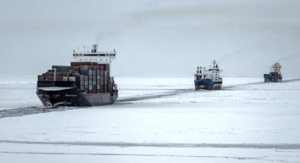
Due to the remoteness of the islands, there are no commuter passenger ferries. However, there are two ports of call for cruise ships, Le Havre and Lille, on the eastern and western sides of Argaea Maior, respectively. These ports of call are designed only for tourist use and all commuter travel is done by plane.
Lighthouses and beacons
There is also a Global Maritime Distress and Safety System repeater and beacon on the island.
Rail
Argaea uses Standard gauge, 1,435 mm (4 ft 8+1⁄2 in) for both freight and passenger rail.
There is no passenger rail in Argaea, there are about 1,384 km of rails used for freight for the research and industrial complexes. Due to the climate, all power is provided by the locomotives, there is no electrification of the rails. 543km of the rails are double track, there are no lengths of high-speed rail in Argaea.
Roads
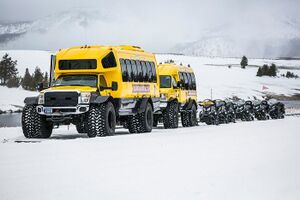
Car ownership is common in Argaea but family units typically only have one car. Transit options exist for school and work so cars are used primarily for chores and housekeeping and visiting friends and family. Because of the cost of gasoline, personal vehicles are rarely people's first choice for transit. Argaea has 11,647 km (7237.11 mi) of roads, and 8,480 km are improved. Most of the improved roads are long-haul routes connecting the sparse settlements. Almost all roads are owned and maintained by the provincial transit authority The Transportation Authority of Argaea (Burg:Authoritat de Transportacion de Argaea (ATA)), with the exception of the roads within Le Havre which has its own transportation authority who maintain the roads within the city limits of Le Havre. There is an inter-community bus system, also operated by the ATA that, in the summer, connects the disparate communities to Le Havre. In the winter, road buses are replaced by off-road buses and the frequency is cut dramatically.
Air
The Argaea International Airport and Air Base, outside of Le Havre, is a small, long haul airport facility that is shared by the civilian terminal and the Australis Task Section of the Royal Air Service of Burgundie, Revenue Guard, and Navy of Burgundie Hyperthalatton.
| Name | Location | Type | Brief description | Code(s) | Picture |
|---|---|---|---|---|---|
| Argaea International Airport and Air Base | Le Havre, Argaea, |
Passenger, cargo, and air base | 24/7/365 air traffic control operations, 2x runways, capable of receiving up to middle sized airframes, cargo terminal, passenger terminal, minimal maintenance facilities, integrated customs and border control service | ATRO: GAB
ICAO: BGRB |
Energy and electricity
Argaea is powered by two nuclear reactors that provide all of the civilian power to the islands and most of the power to the government facilities. As a fail-safe there are 6 ciritical facilities that have "less volatile" power generation stations which burn fossil fuels. In 1998-2012 a massive tidal generation project was created in the Viseaux channel that takes advantage of the incredibly powerful westerly current that makes the channel a navigational hazard. The project now generates 17MW and further expansion is expected before 2050. The BORA Waste to Energy Compact went into effect in 2027 with construction of a Waste to Energy power plant starting in 2028. Two plants were built in Argaea generates approximately 208,000 kWh/day with a waste reduction capacity of 220,000 kg/day.
Phone service and internet
Phone service is provided by Island Mobile, and Landline service is available and is still popular with those who live in the remote parts of Argaea. Because of the number and intensity of the broadcasting and receiving equipment used by the government, cellular service can be spotty at times when the government is using all of its apparatuses.
Highspeed internet service is provided by National Wireless Services a public-private ISP offered to areas of the Burgoignesc thalattocracy that don't have enough demand to create a competitive market. Residential internet speeds average 2 gigabits while commercial speeds are typically higher in the 3-4 gigabit range. National Wireless Services piggybacks on the Island Mobile towers and also has a few towers of their own.
There are also two Global Maritime Distress and Safety System repeaters and a beacon on the islands.
See also
- Pages using duplicate arguments in template calls
- Pages with non-numeric formatnum arguments
- Pages using infobox settlement with possible nickname list
- Pages using infobox settlement with no map
- Pages using infobox settlement with no coordinates
- Pages using country topics with unknown parameters
- Burgundie
- Sub-national Regions in Burgundie
- Australis
- Islands
- Burgoignesc islands



